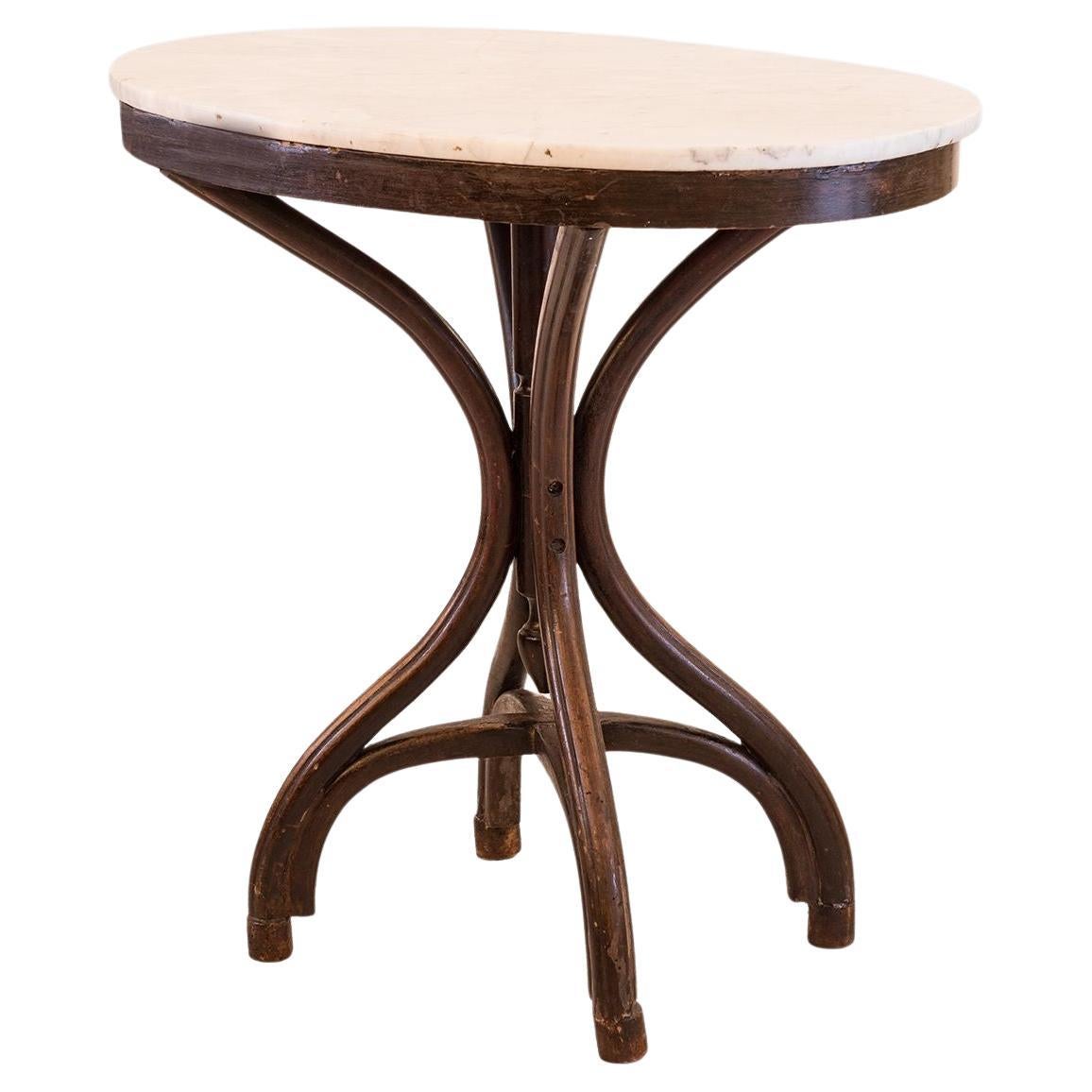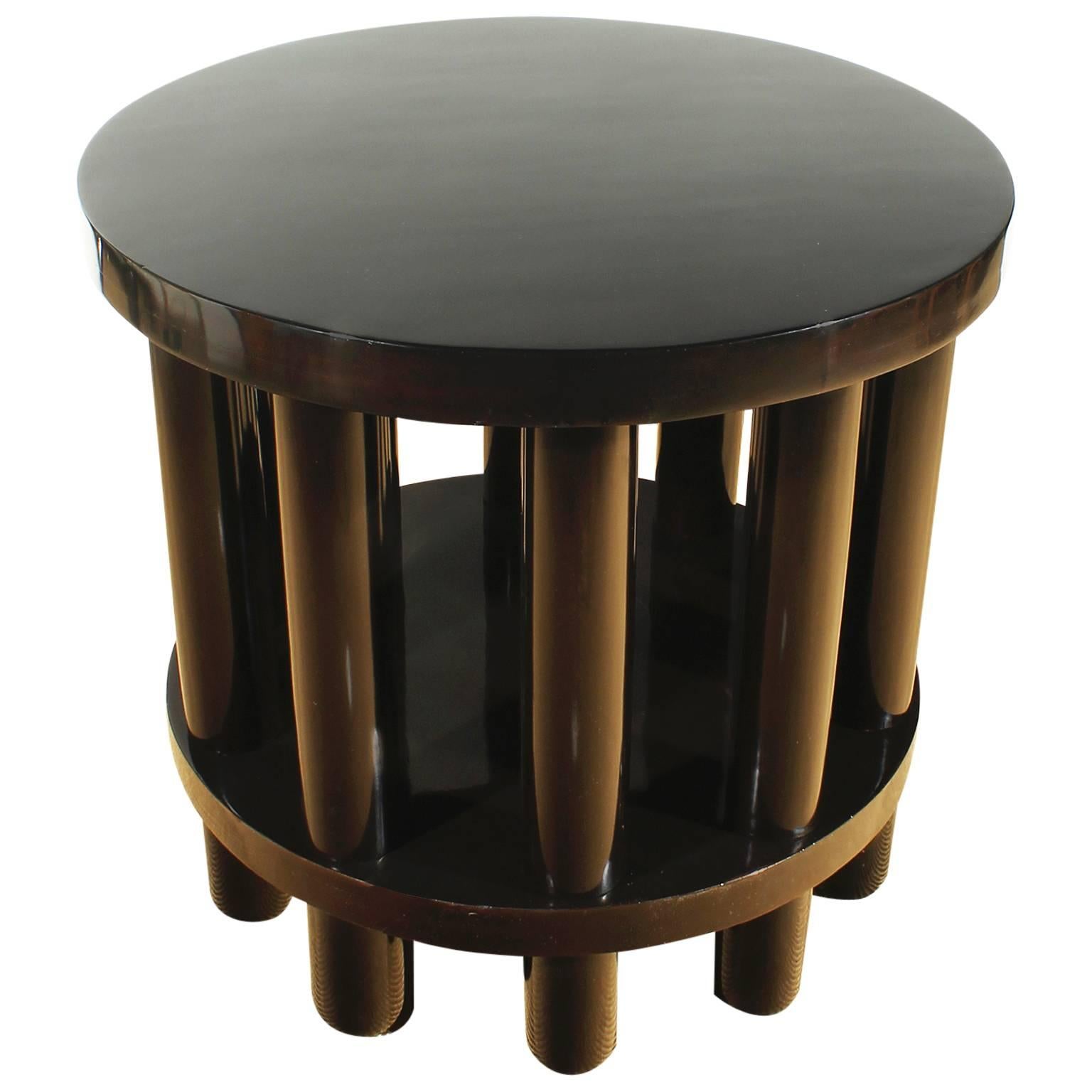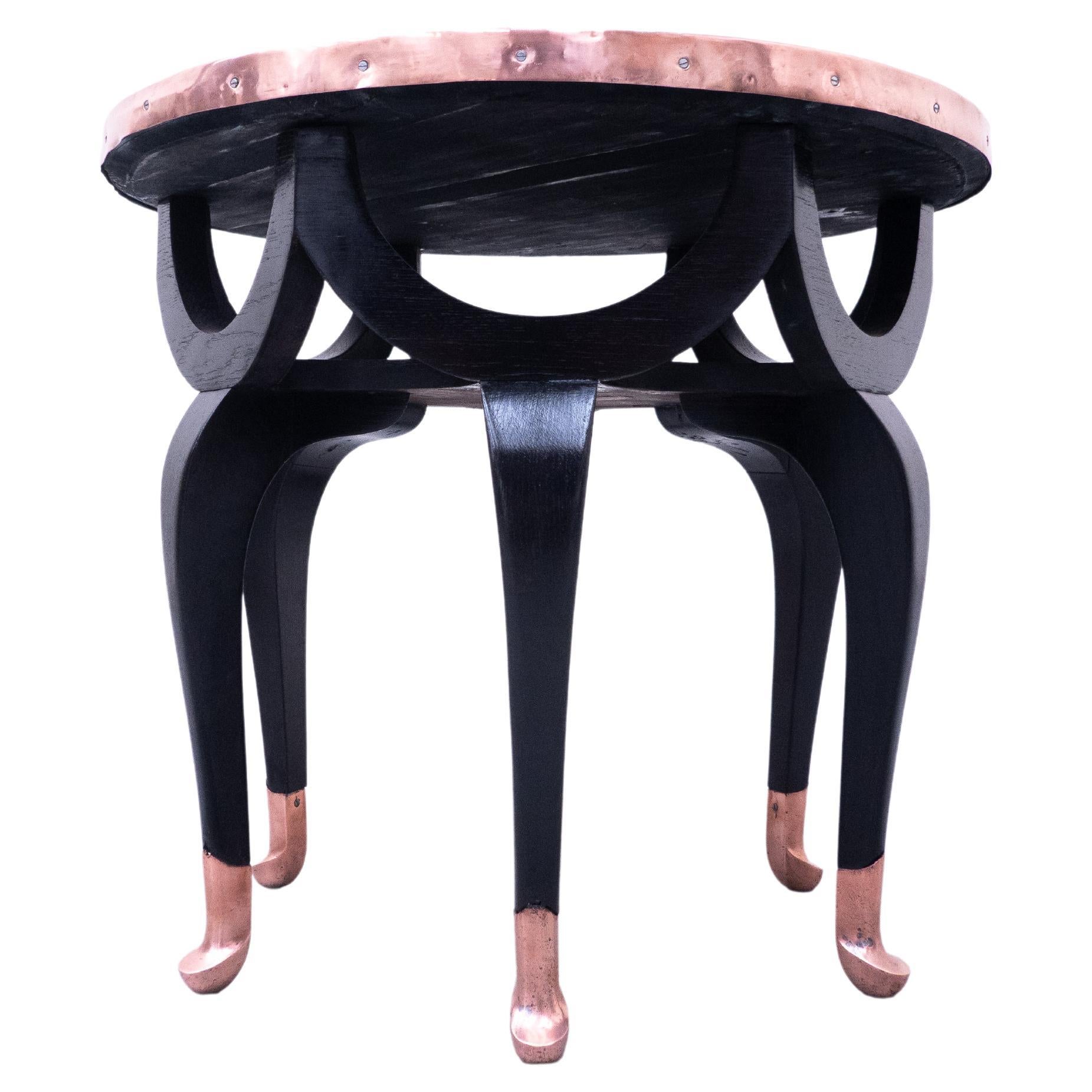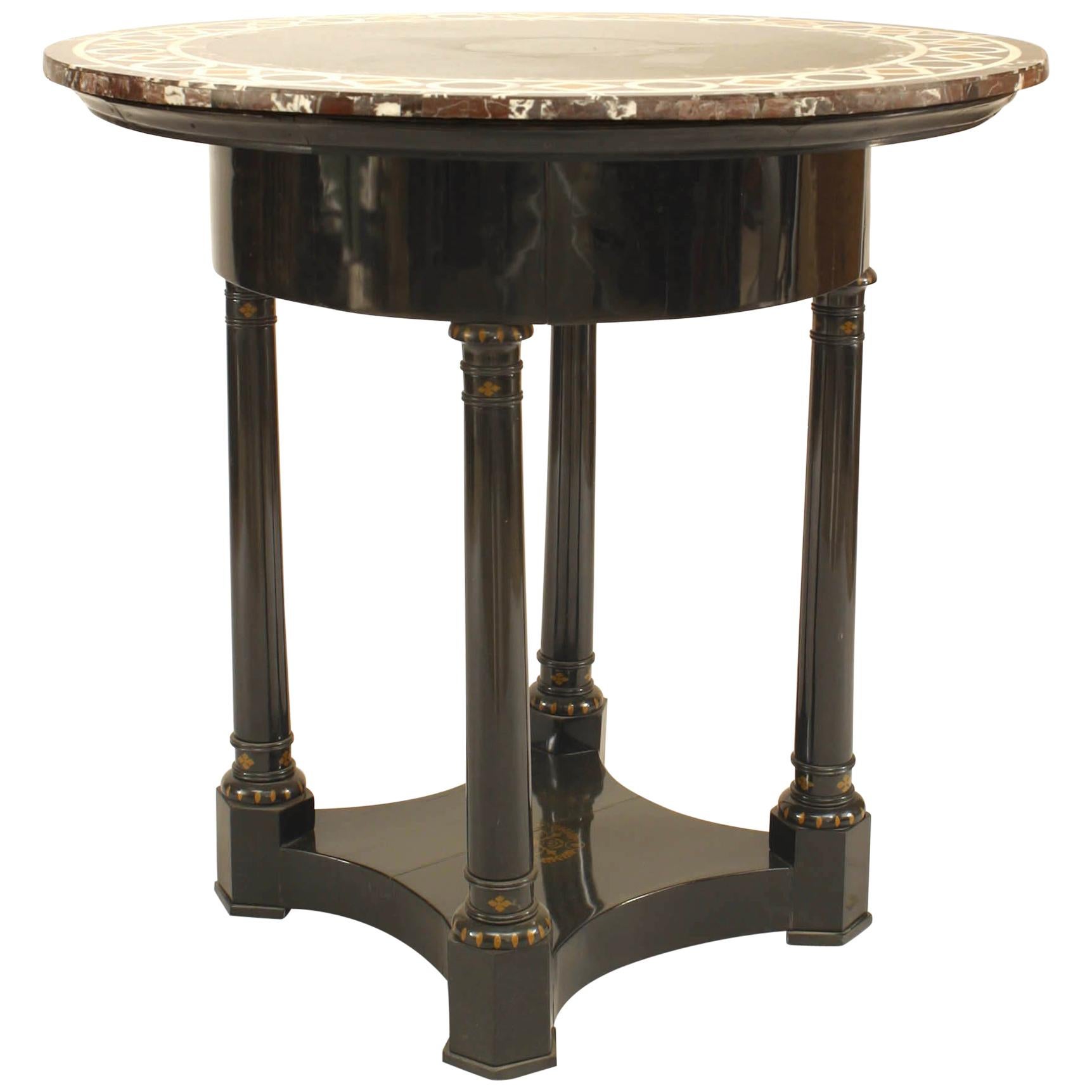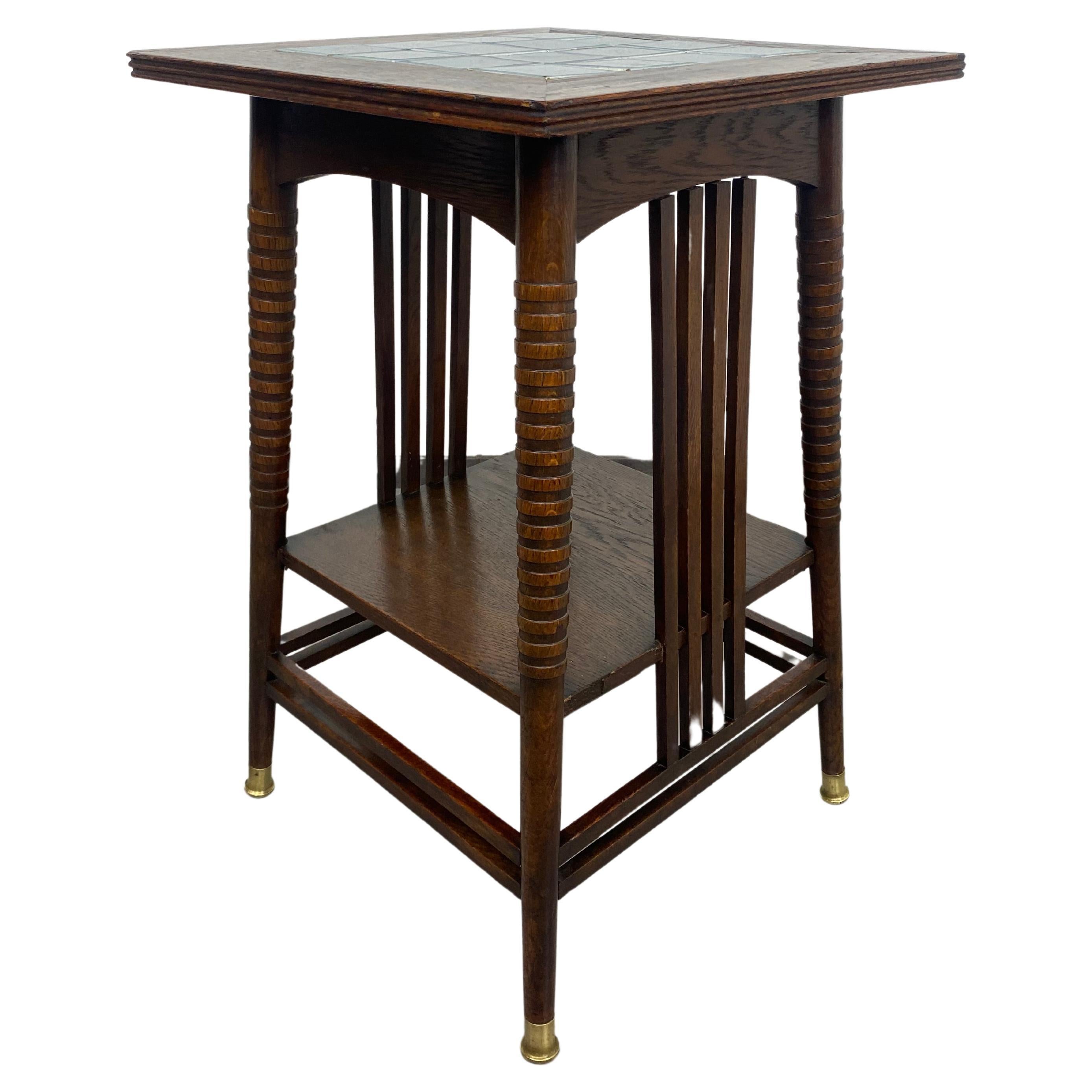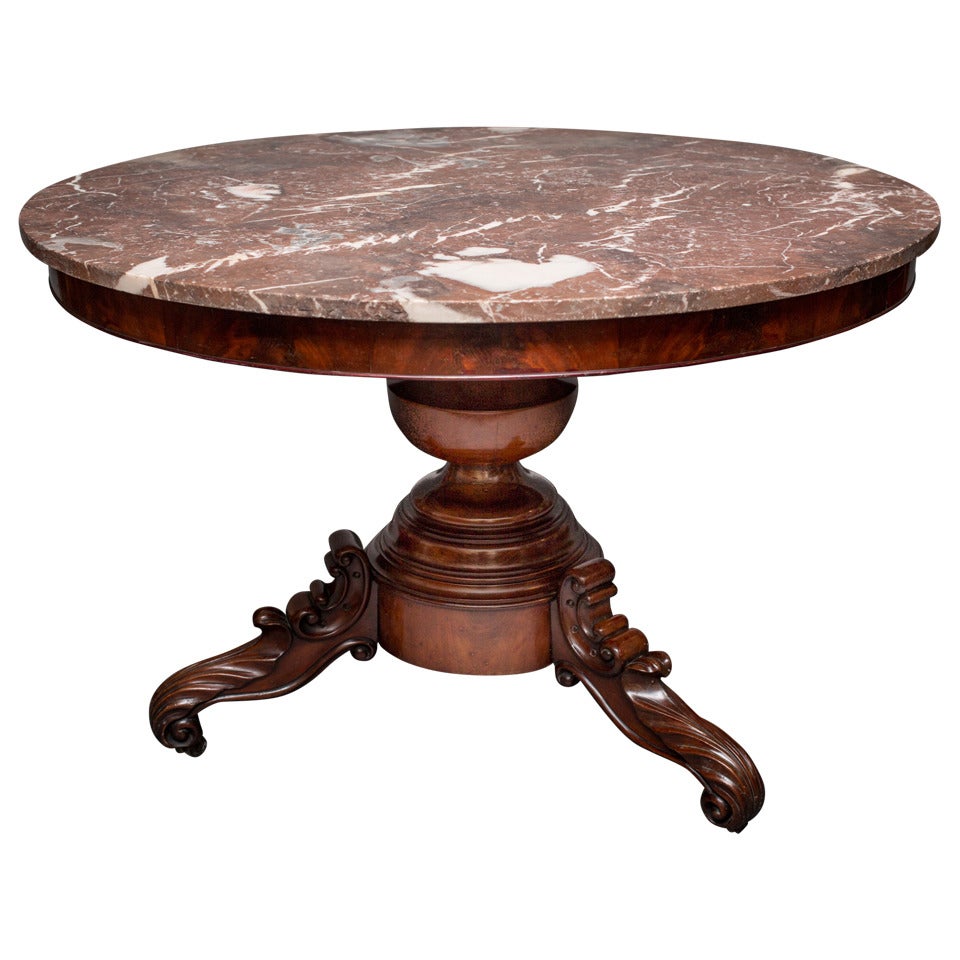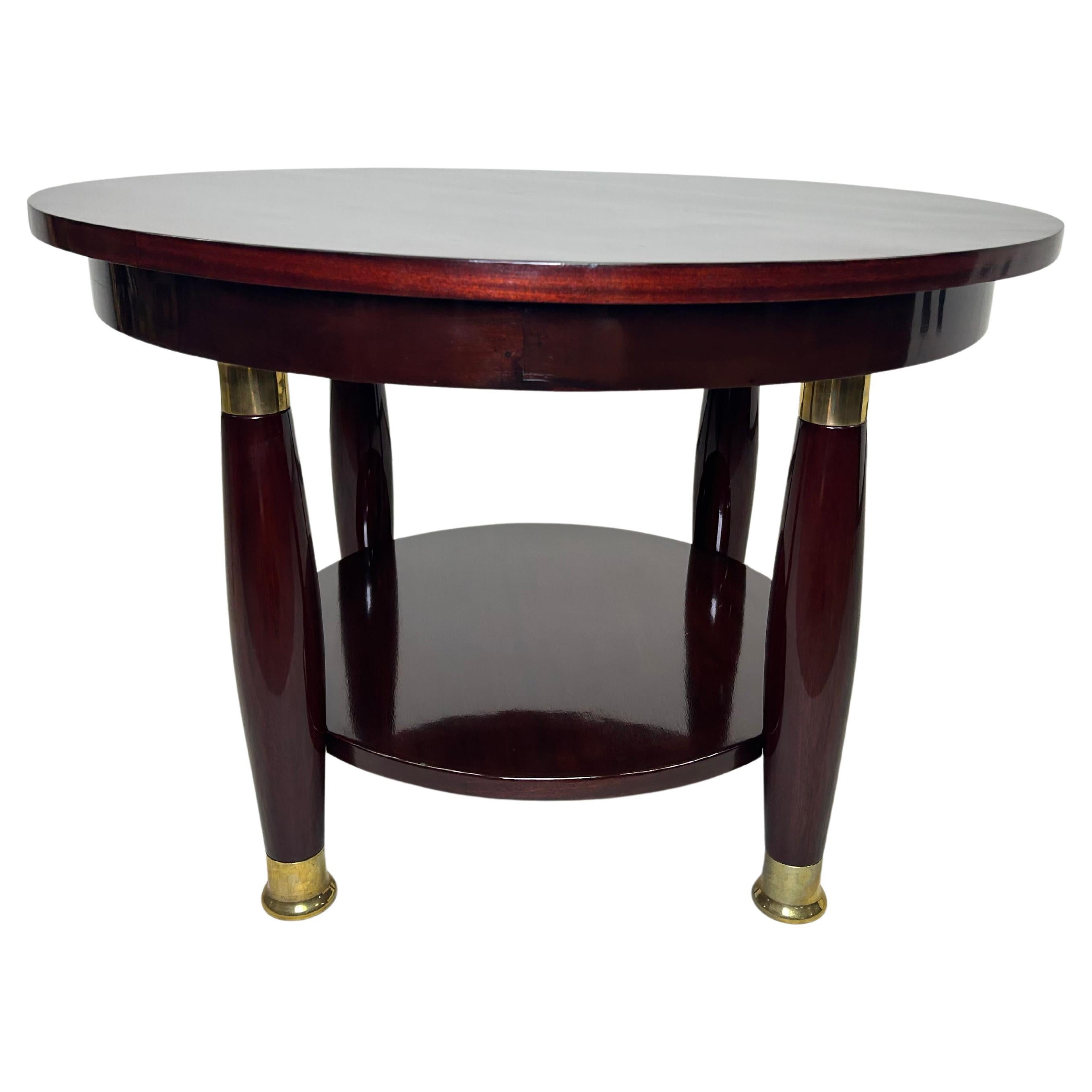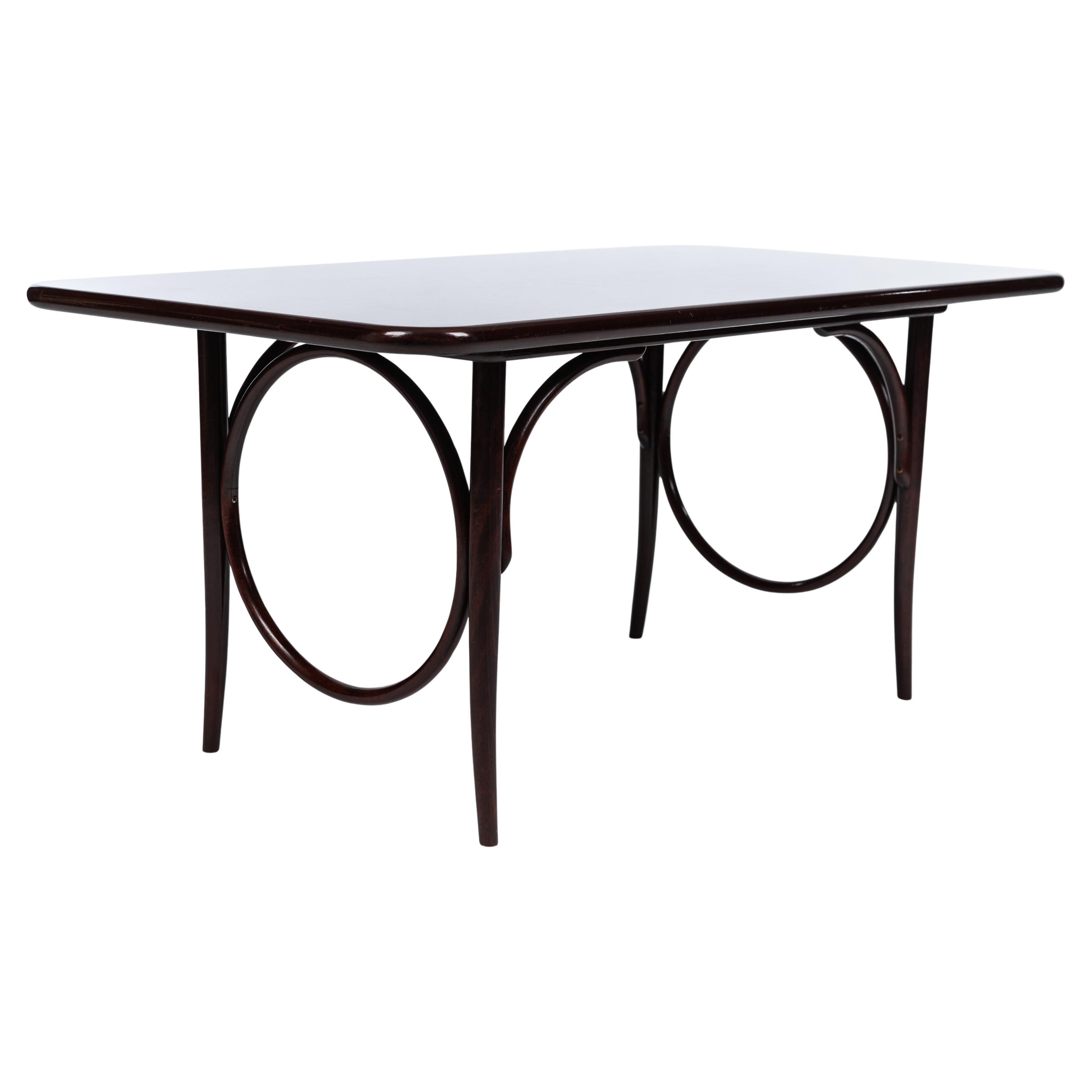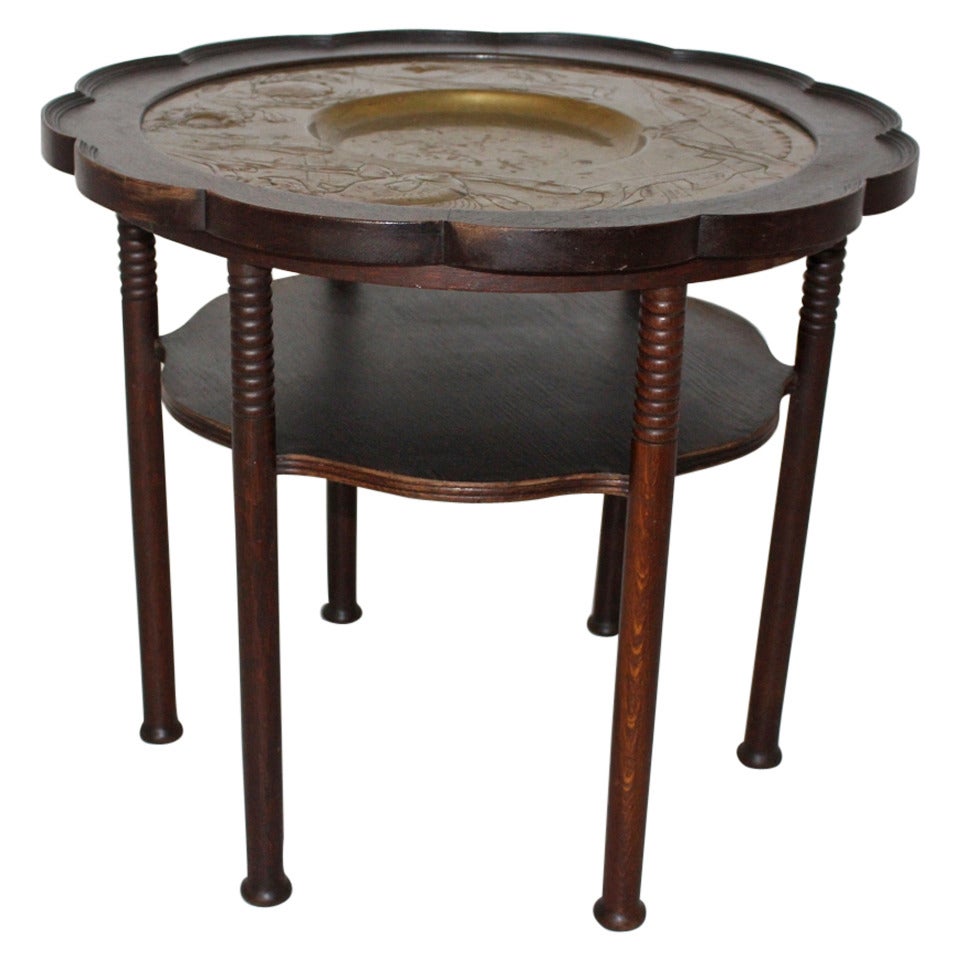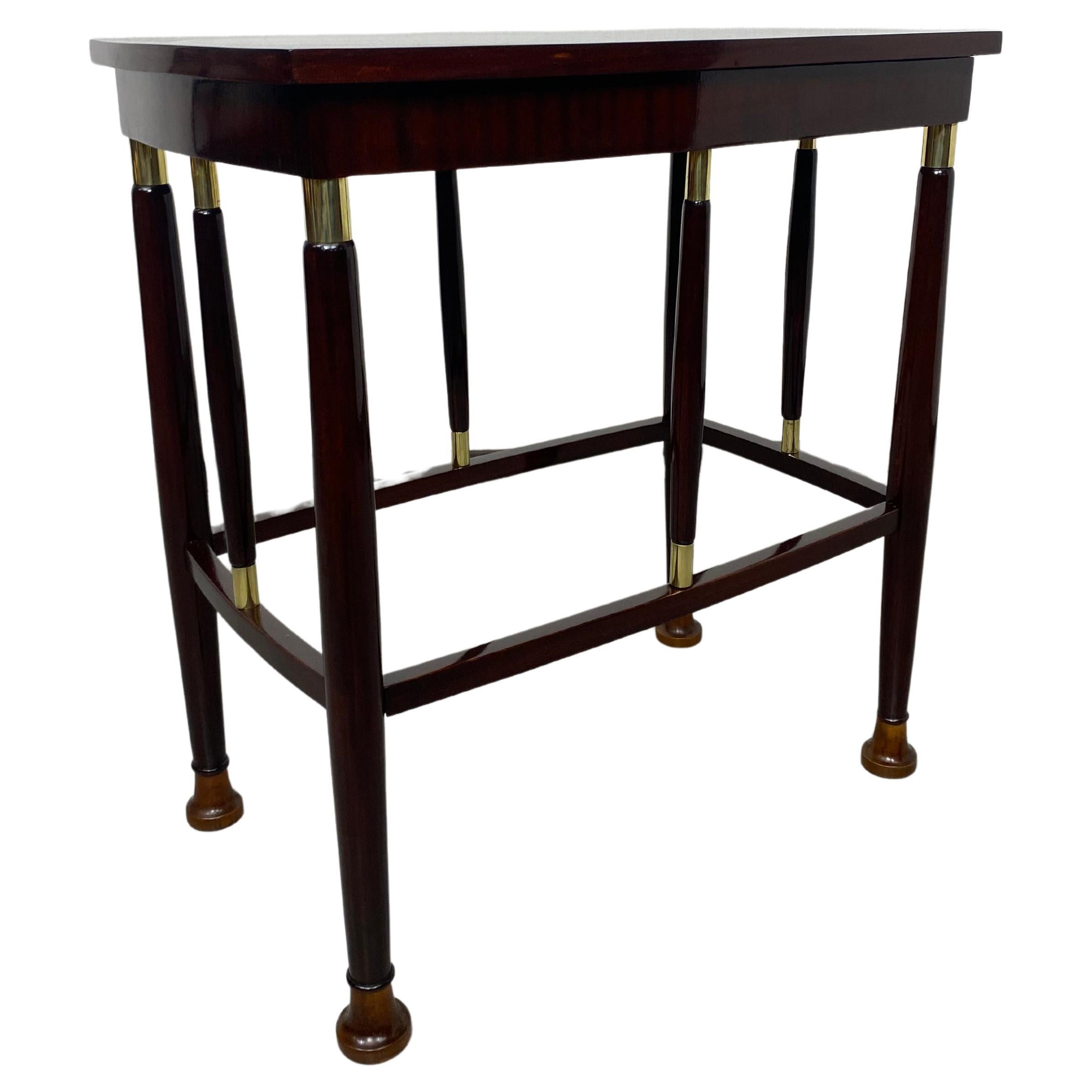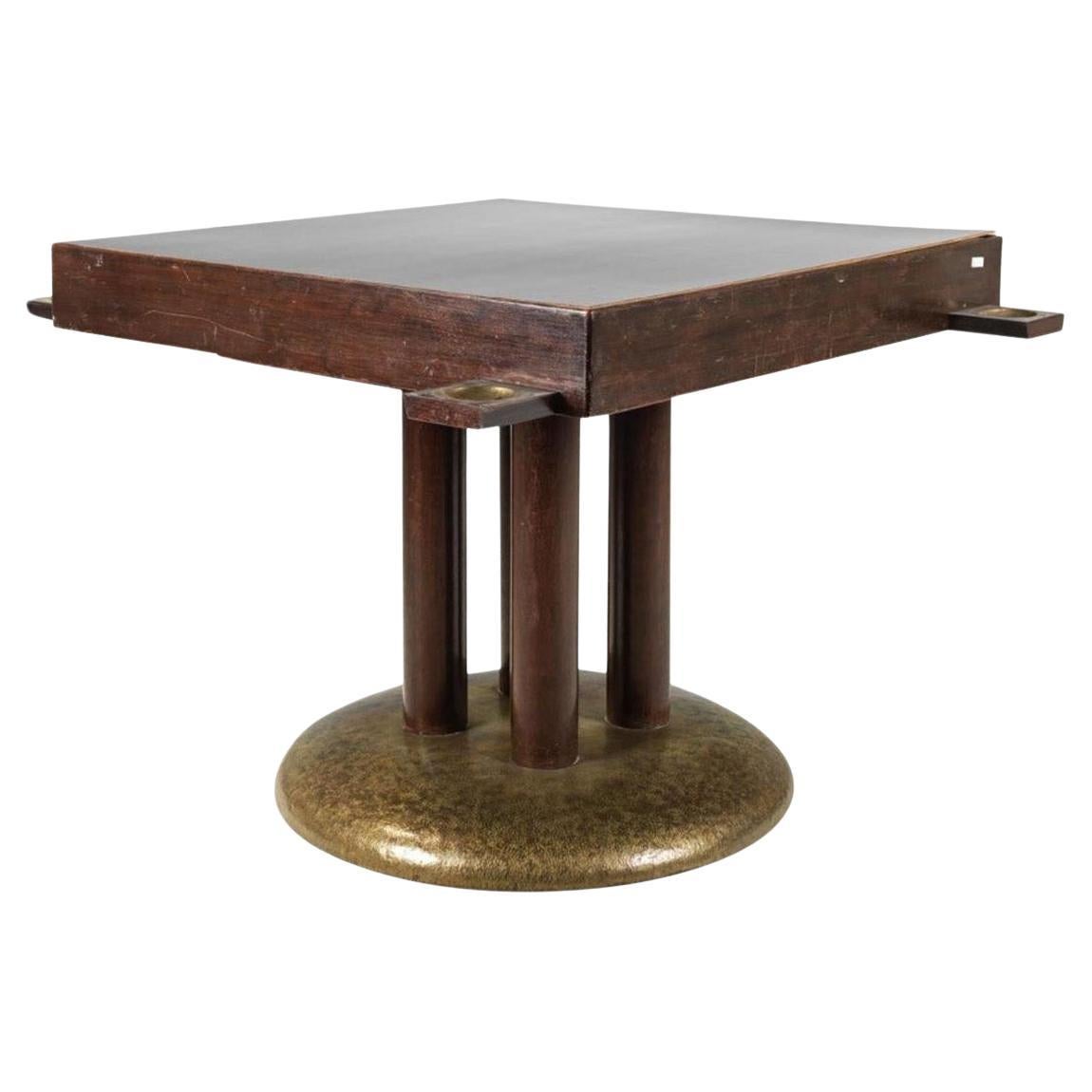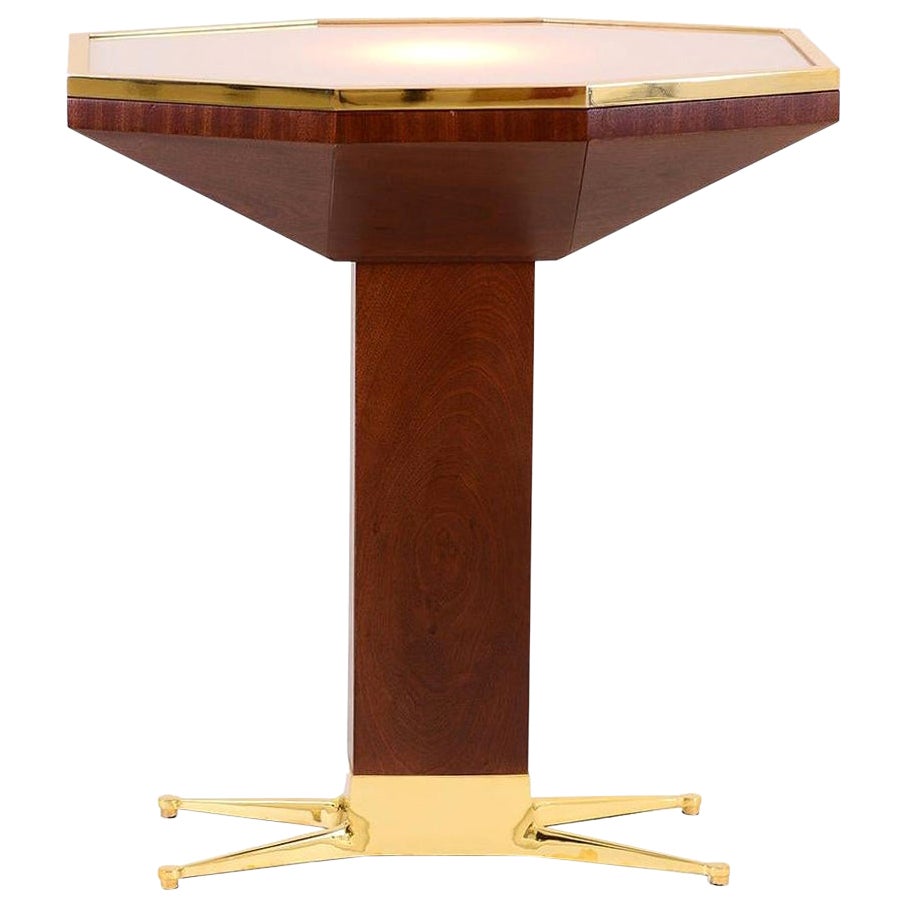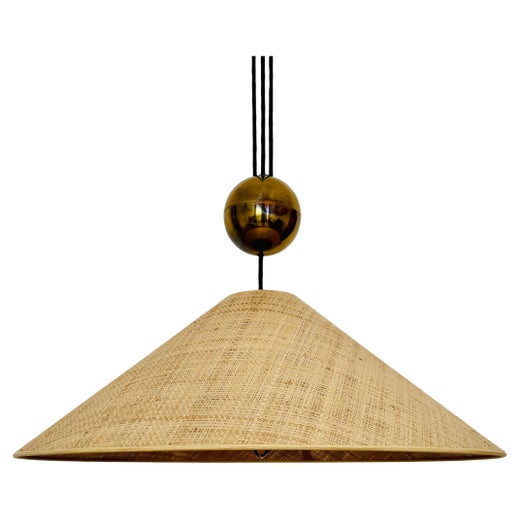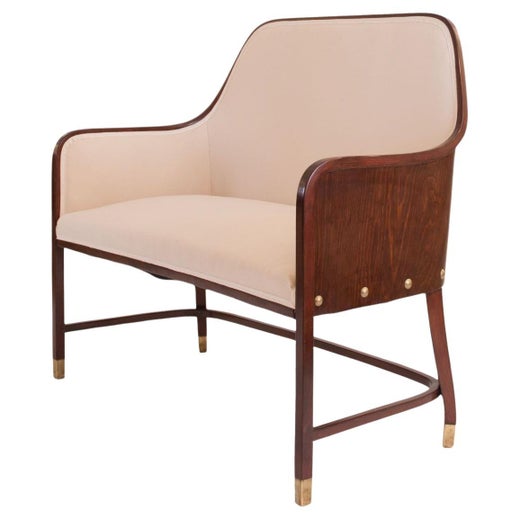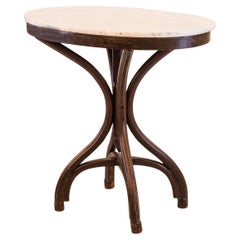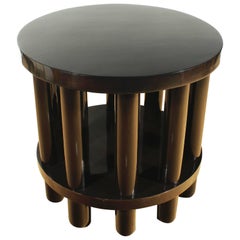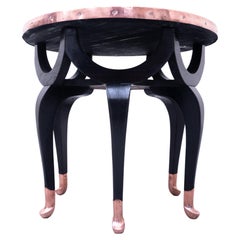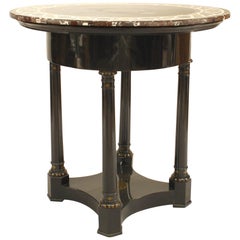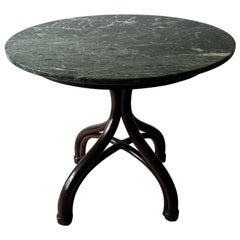
Adolf Loos Cafe Museum Center Hall Table with Green Marble Top, Austria 1910
View Similar Items
Adolf Loos Cafe Museum Center Hall Table with Green Marble Top, Austria 1910
About the Item
- Creator:Adolf Loos (Designer),Jacob & Josef Kohn (Maker)
- Dimensions:Height: 27.56 in (70 cm)Diameter: 35.44 in (90 cm)
- Style:Jugendstil (Of the Period)
- Materials and Techniques:
- Place of Origin:
- Period:1910-1919
- Date of Manufacture:1910s
- Condition:Wear consistent with age and use.
- Seller Location:Vienna, AT
- Reference Number:1stDibs: LU5244236244912
Adolf Loos
Essentially dubbed the Frank Llyoyd Wright of Europe by Wright himself, Adolf Loos possessed a talent for architecture and interior design as potent as his outspoken criticism of Art Nouveau and excessive ornamentation. A forerunner of the International Style, Loos exercised immense restraint in his building projects as well as his designs for chairs, tables, storage pieces and other furniture, and wrote prolifically on his disdain for taking a decorative approach to architecture.
The son of a stonemason and sculptor, Loos was born in 1870 in what is now Brno in the Czech Republic. He studied architecture in Dresden in 1889, completed a year of military service and moved to the United States by 1893. He visited the World’s Columbian Exposition in Chicago and came to appreciate the American approach to design over his three-year stay before returning to Vienna.
An avid proponent of simplicity, Loos hated fluff above all else. In his best known essay, “Ornament and Crime,” he states “the evolution of culture is synonymous with the removal of ornamentation from objects of everyday use” — a principle evident in both his architectural work and furniture. His writing was profoundly influential for practitioners of the International Style that would emerge later as well as the likes of prolific Swiss-born French architect and modernist prophet Le Corbusier.
Loos challenged the prevailing architecture and decorating styles of his time, and disliked the ornate work associated with the Vienna Secession and Gesamtkunstwerk — the concept of a house as total work of art — an ideal pursued by a collective born from the Secession called the Wiener Werkstätte. To Loos, design should prioritize function, and any ornamentation devoid of a structural purpose was childish and unnecessary.
Loos’s furniture — alongside the work of fellow Austrian architect Josef Hoffman — was the subject of an exhibition at the Museum of Applied Arts in 2014. His architecture projects, including the Viennese Goldman and Salatsch building, the Austrian Steiner House and the Villa Müller in Prague, are celebrated by design enthusiasts all over the world.
Find vintage Adolf Loos seating, lighting and other furniture on 1stDibs.
Jacob & Josef Kohn
While the first name that comes to mind when thinking of bentwood furniture might be Thonet (maker of the iconic Thonet No. 14 chair or “bistro chair”), Michael Thonet and his subsequent studio, the Gebrüder Thonet (Thonet Brothers), had a strong competitor in 19th-century Vienna: Jacob & Josef Kohn (also referred to as J. & J. Kohn).
Founded in 1849 by a father and son with the motto “Be one step ahead,” Jacob & Josef Kohn created modern furniture for indoors and out from Austrian beech. At the turn of the 20th century, after establishing itself with mastery of everything from chairs to coatracks and even doll furniture, J. & J. Kohn began working closely with the Wiener Werkstätte, the artisan cooperative cofounded by Austrian architect and designer Josef Hoffmann (Gustav Klimt and Koloman Moser were also members). Through this partnership, J. & J. Kohn produced an array of furniture in bentwood, cane and upholstery, which it sold through showrooms across Europe and North America. Its designs throughout the first decade of the 20th century reflect the Art Nouveau movement that was quickly gaining traction across Europe.
Price wars and mergers ensued during the First World War. Changes in the organizational structure of Thonet included a merger with Viennese company Mundus in the early 20th century, which followed Mundus’s becoming a majority stakeholder in J. & J. Kohn — these mergers yielded the formation of Mundus-Kohn and later, in 1922–23, Thonet-Mundus. The new conglomerate went on to produce examples of its bentwood furniture in keeping with the modern style of the Vienna Secession. While Thonet rebuilt, rebranded and expanded in the United States and elsewhere after World War II, J. & J. Kohn never produced furniture under that name again.
On 1stDibs, find a variety of antique J. & J. Kohn furniture including bentwood wingback chairs designed by Josef Hoffmann and other seating, side tables, beech nesting tables and more.
You May Also Like
Antique 1890s Austrian Jugendstil Card Tables and Tea Tables
Marble
Antique Early 1900s Austrian Vienna Secession Center Tables
Pine, Mahogany, Beech
Vintage 1910s Austrian Art Nouveau Side Tables
Wood
Antique 19th Century Austrian Biedermeier Center Tables
Marble
Antique 19th Century French Center Tables
Marble
Antique Early 1900s Czech Jugendstil Side Tables
Brass
